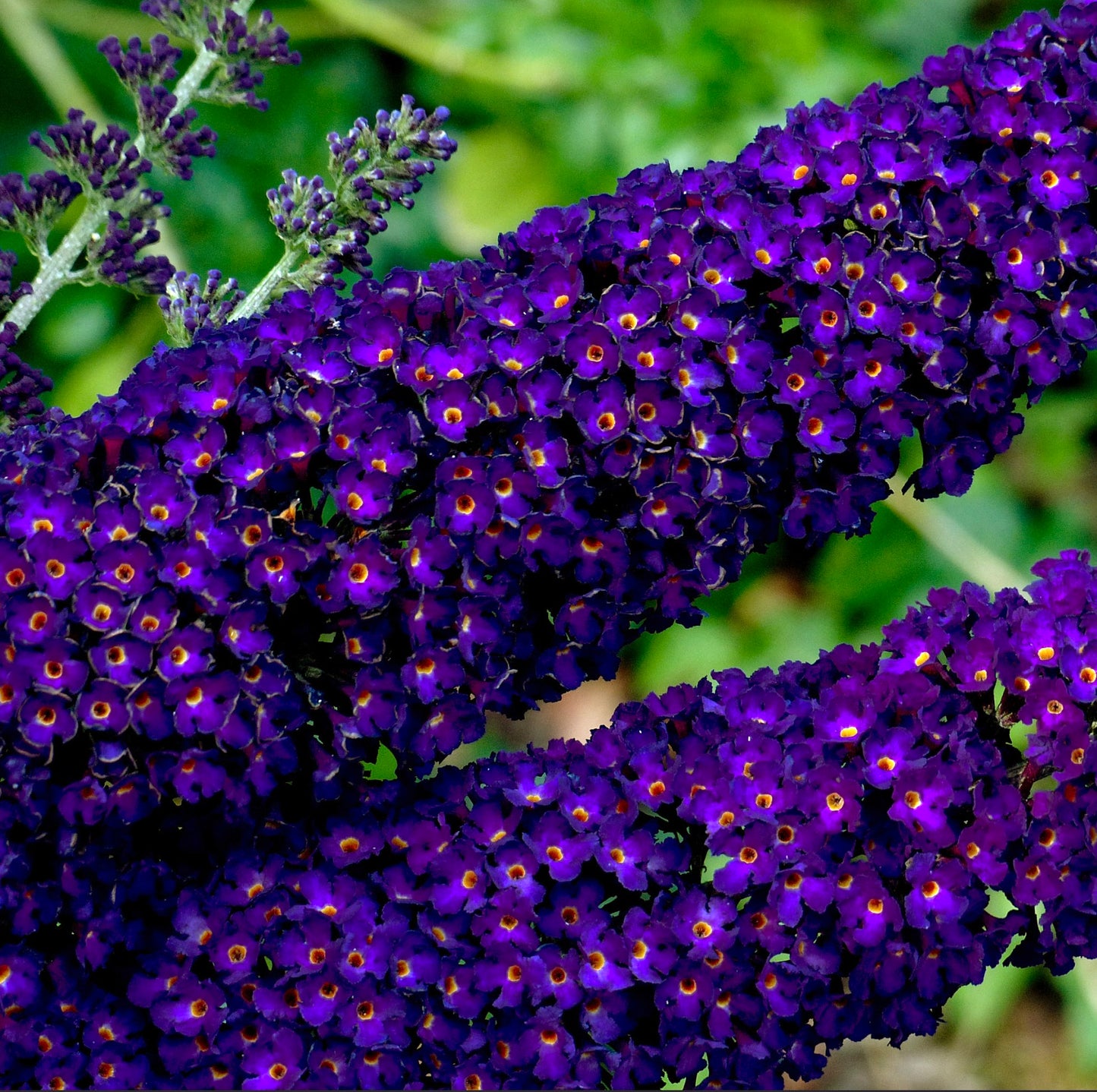- Catalogue Plants
Buddleja davidii (fiore viola) 30-50cm
Buddleja davidii (fiore viola) 30-50cm
Couldn't load pickup availability
Plant Description
Buddleja davidii, commonly known as the butterfly bush or summer lilac, is a popular deciduous shrub prized for its attractive, fragrant flowers and its ability to attract butterflies and other pollinators.
-
Appearance:
- Butterfly bushes typically grow between 6 to 12 feet (1.8 to 3.6 meters) in height, depending on the variety and growing conditions.
- The leaves are lance-shaped, gray-green, and arranged in an alternate fashion along the stems.
- The flowers are the highlight of this plant, forming dense clusters (panicles) at the tips of the branches. They come in various colors, including shades of purple, pink, white, and blue, depending on the cultivar.
- The fragrant blooms are often tubular and attract butterflies, bees, and hummingbirds.
-
Blooming Period:
- Buddleja davidii typically blooms from mid-summer to early fall, making it a valuable late-season nectar source for pollinators.
-
Hardiness:
- Butterfly bushes are generally hardy in USDA hardiness zones 5 to 9, although specific cultivars may vary in their cold tolerance.
Cultivation:
-
Location:
- Plant your butterfly bush in a location that receives full sun to partial sun. It thrives in well-drained soil.
- Adequate sunlight is essential for abundant flowering.
-
Soil:
- These shrubs prefer well-draining soil with a slightly acidic to neutral pH. Amending the soil with organic matter, such as compost, can improve drainage and fertility.
-
Watering:
- Butterfly bushes are somewhat drought-tolerant once established, but they benefit from regular watering, especially during dry spells or in the first growing season.
- Be cautious not to overwater, as they don't like soggy soil.
-
Pruning:
- Pruning is a crucial aspect of butterfly bush care. In late winter or early spring, before new growth begins, prune the shrub back to about 12-18 inches (30-45 cm) above the ground.
- This severe pruning helps promote vigorous new growth and a profusion of flowers during the growing season.
- You can also deadhead spent flowers during the blooming period to encourage more blooms.
-
Fertilization:
- Butterfly bushes generally do not require heavy fertilization. A balanced, slow-release fertilizer applied in the spring can be beneficial.
-
Pest and Disease Control:
- Butterfly bushes are relatively resistant to most pests and diseases. However, they can occasionally attract aphids and spider mites. These can be controlled with insecticidal soap or neem oil.
-
Mulching:
- Applying a layer of mulch around the base of the shrub helps retain soil moisture and suppress weeds. Avoid piling mulch against the stem to prevent moisture-related issues.
-
Propagation:
- Butterfly bushes can be propagated from softwood cuttings or by collecting and planting seeds. Softwood cuttings are usually taken in late spring or early summer.
By following these cultivation tips, you can enjoy the beauty of Buddleja davidii in your garden while providing valuable nectar for butterflies and other pollinators. Proper pruning and care will help maintain the health and vigor of the plant, ensuring a bountiful display of fragrant flowers during the growing season.
IMPORTANT: Please be aware that picture 1 show adult plant not for sale, the offer is for a plant in the dimension indicated in title description.and, etc.
Botanical family: Buddlejaceae
Botanical genus: Buddleja
Botanical species: Buddleja davidii
SKU:BA-0677-S
Cultivation
Cultivation
Info and Disclaimers
Info and Disclaimers
Plant Height: 30-50cm
Plant Diameter:
Pot Size:
Grafted/Not Grafted:
Disclaimer: Be aware that most plants change across seasons. If present foliage, could have been fallen or change in its color.


